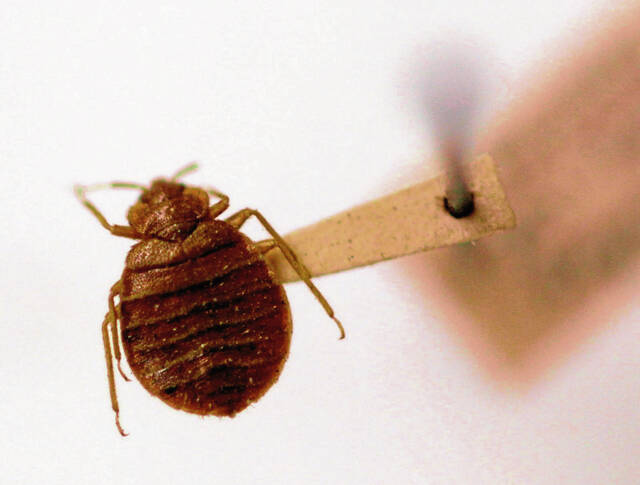https://mirror.triblive.com/opinion/editorial-bedbugs-arent-a-problem-that-can-wait/
Editorial: Bedbugs aren't a problem that can wait

Don’t let the bedbugs bite.
It’s more than just the cutesy saying your mom would use when tucking you in. Bedbugs are no fairy tale. They’re an all-too-real pest that is not easy to eradicate.
Vandergrift residents were thus right to be more than a little alarmed — and grossed out — by a pile of mattresses left in front of an apartment building at 502 Lowell St.
People frequently “freecycle” furniture or other items left out as unwanted before they are picked up as garbage. But these mattresses came with a sign warning against it.
“Don’t get too close to the mattress. It is infested with bed bugs!!!” the handwritten paper cautioned, while a second informed people the apartment it came from likewise was filled with the bugs and “millions of eggs.”
OK, good to know. Not the kind of thing someone wants to find out after the disgusting mattress is strapped to the car roof.
But the sign wasn’t left by the tenant who owned the mattress or the property management company that owned the property. It was left by a resident of the neighboring building.
EBG Properties is the building manager and reported the building is empty after eviction because previous tenants were hoarders. That helps explain the bugs. And contractors were engaged to clean and fumigate the building.
But with the mattresses outside on a public street, the problem rapidly could move from being one building to a bedbug epidemic. Bedbugs spread easily, hitching rides on pant legs or book bags to set up shop in new locations.
Bedbugs pose a public health risk and are noted by the Centers for Disease Control and Prevention for causing allergies including anaphylactic reactions and secondary infections such as impetigo and lymphangitis. Exterminators can charge hundreds of dollars for treating just one room for the pests, and repeat visits can be necessary because they are tenacious little beasts.
Vandergrift Councilwoman Christine Wilson had borough crews leave the mattresses and a couch they were leaned against rather than picking them up, saying the property owner was responsible for disposal.
That is true. But when it comes to a public infestation, it seems like the wrong time to quibble.
Taking care of the potential threat, mitigating the risk and limiting the spread were all higher priorities for the public good than determining who legally was responsible. If the building was on fire, would the fire department need to know whose name was on the deed before breaking out a hose? No. You take care of what’s important and worry about blame or liability later.
Copyright ©2025— Trib Total Media, LLC (TribLIVE.com)
